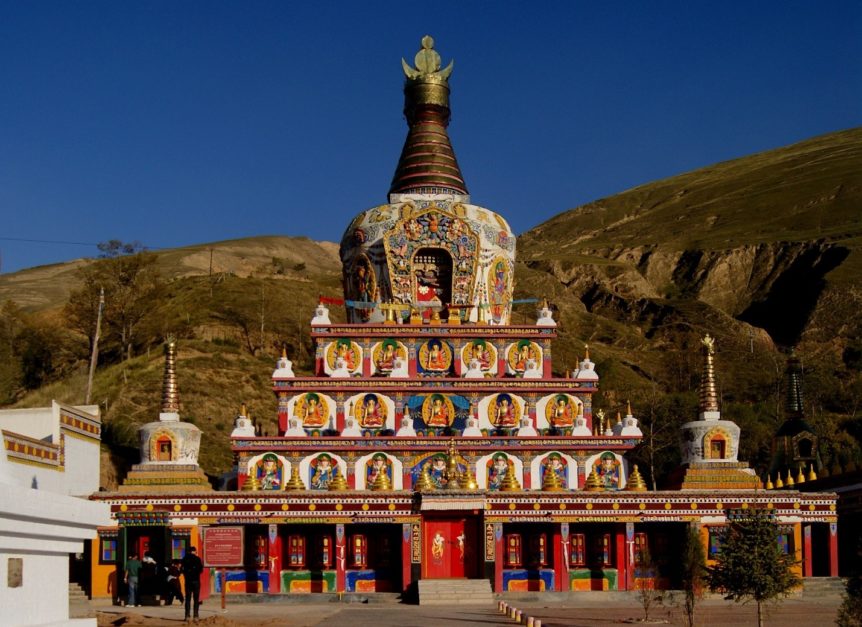History of Rongwu Monastery
Named for the Rongwu River, which it is located alongside, the Rongwu Monastery (རོང་པོ་དགོན་པ།)rests in Tongren County, Huangnan Tibetan Autonomous Prefecture and is less than 200 km from Xining, the capital of Qinghai Province. The Monastery first began as a site for three temples in 1341. Initially established by Rongwu Samten Rinpoche, his younger brother was the designer and architect for the compound. The Temple of Three Buddhas was the first to be built, followed by the Golden Temple. It wasn’t until the first reincarnation of Rongwu Samten Rinpoche was recognized however, that the monastery was founded at the site of the three temples. Interestingly enough, the Monastery initially began under the Sakya Sect Monastery, however, over the years it became part of the Gelugpa Sect of Buddhism.
Expansion
Over the centuries, Rongwu Monastery has been expanded and updated and in 1991, when the eighth incarnation of Rongwu Samten Rinpoche was recognized, Yarba Chogyi, the Monastery received its newest building and further expansions. Yarba Chogyi built stupas at the four corners of the Monastery as well as a Victory Stupa. He had sayings of Buddha written in gold in various locations and even commissioned statues of Tsong Kapa. His greatest addition however, was the large prayer hall within the compound. Today, there are several significant buildings at Rongwu Monastery including The Great Sutra Hall, The Manjushri Hall, and the Main Assembly Hall.
Monastic Colleges
The first monastic college was established by Shartsang Gyatso in 1630, in which multiple Buddhist dialects were taught. Following several re-incarnations of Shartsang Lobsang Trinley Longtok Gyatso, the college was expanded and new halls were built to host the new colleges that were to come. The Gyamat Tratsang, or The Lower Tantric College, was established next, focusing on the study of the scriptures. This was followed by The Duikor Tratsang, or the college of Kalachakra, the study of the wheel of time.
Cham Dance
Performed during the Monlam Prayer Festival, the Cham Dance is a common sight at the Rongwu Monastery. The dance consists of traditional Tibetan instruments played by the monks and is meant to be a form of meditation and offering to the Gods. While it is not found in all sects of Buddhism, the monks at Rongwu Monastery are known for their impressive displays.

